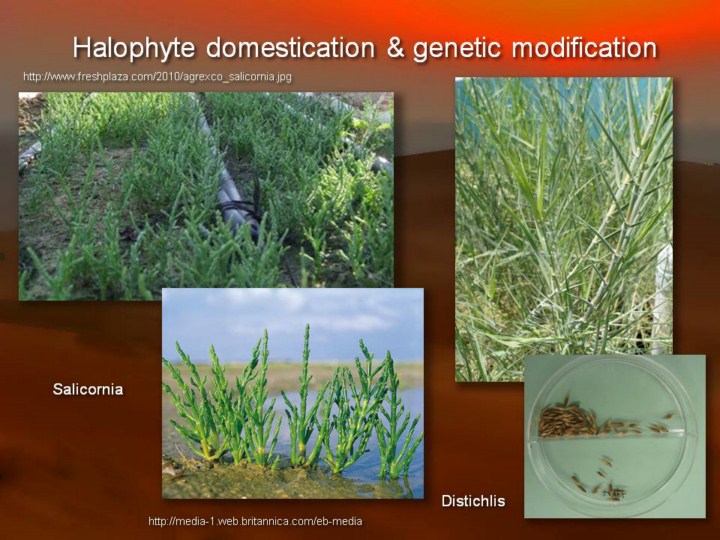| front |1 |2 |3 |4 |5 |6 |7 |8 |9 |10 |11 |12 |13 |14 |15 |16 |17 |18 |19 |20 |21 |22 |23 |24 |25 |26 |27 |28 |29 |30 |31 |32 |33 |34 |35|36 |37 |38 |39 |40 |41 |42 |43 |44 |45 |46 |47 |48 |49 |50 |51|52 |53 |review |
 |
That brings me to what is arguably one of the world’s major long-term challenges in the face of population growth and climate change, which is the supply of animal fodder and grain for feed. It is very unlikely that feed and fodder crops can ever be grown economically under glass, so how will we keep up with the growing demand for animal protein in our diet? One answer is to begin domesticating plants that evolved to survive the high temperatures and salt concentrations of coastal deserts: plants that are called halophytes for their salt tolerance. People have been talking about halophytes for agriculture for decades, but not doing much about it, although Salicornia is increasingly popular as a vegetable and is used as a feed for lambs, marketed as salt-marsh or salt-bush lamb in Europe and Australia, respectively. Distichlis or saltgrass is another interesting species with potential as a fodder grass, as well as a grain crop. Unlike Salicornia, which accumulates salt in intracellular vacuoles, it secretes salt, which means that the plant material itself isn’t salty. This is one of the objectives of my research program in Saudi Arabia: to use modern genomic tools to domesticate species with high tolerance to the abiotic stresses anticipated in the future.
|